What are abrasives made of? Types of abrasives and tips on how to choose the right one! Advantages of choosing the right abrasive for your application

Abrasive materials range from sandpaper to rolls and belts.
You may have also noticed that the backs of many more abrasives have a unique print.
In fact, this printout is packed with information that is very useful for understanding abrasives, so it is worth knowing.
In this issue, Sankyo Rikagaku Co., Ltd. a comprehensive abrasives manufacturer, introduces the structure, manufacturing methods and types of abrasives.
Table of Contents
1. How to choose abrasives - What are abrasives made of? Is it true that abrasives are versatile products that can sharpen a wide range of materials from metal to wood?
2. How to choose abrasives - Are there many types of abrasives? Read and understand the print of abrasives!
3. How to choose abrasives - Which abrasive should I choose? Let's take a look at the different shapes of abrasives!
4. How to Choose Abrasives - Which Abrasive is Best for Polishing Plastics? Polish efficiently with the right abrasives for the right situation!
5. Let's understand abrasives correctly to achieve a better finish!
1. How to choose abrasives - What are abrasives made of? Is it true that abrasives are versatile products that can sharpen a wide range of materials from metal to wood?

Many machining operations always involve a polishing process.
Typical materials used in the polishing process are abrasives.
Since there are many different types of abrasives, it is no exaggeration to say that selecting the right one for the application will determine the finished product.
It is important to understand how abrasive materials are made in order to know what they are.
General abrasives have the structure shown in the figure below.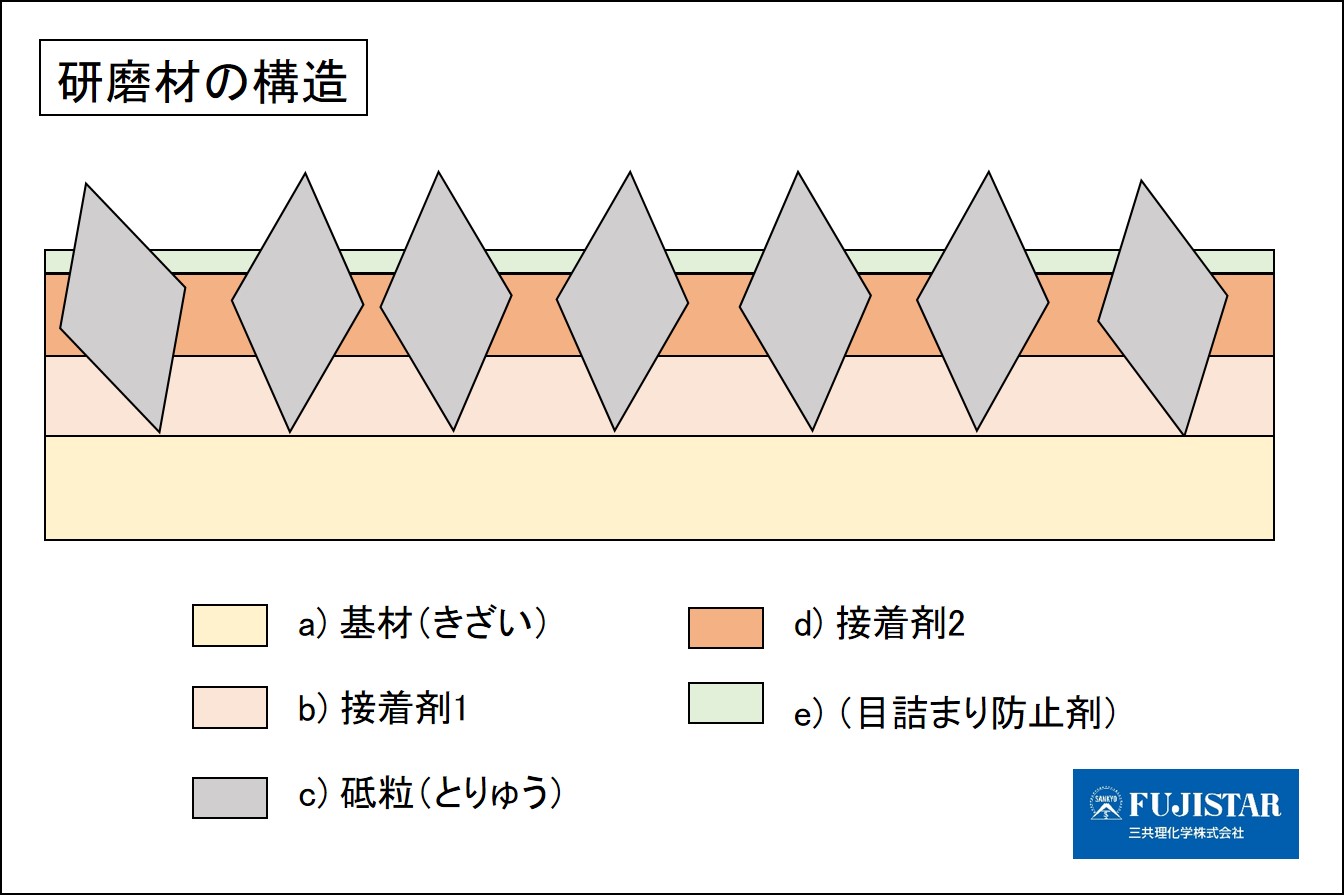
a. Base Material
Mostly paper, cloth and film, these are the main parts of abrasive materials.
b. adhesive1
Adhesive is used to fix the abrasive grains to the substrate.
c. Abrasive grains
Abrasive grains are the main component of abrasive materials. Abrasiveness varies greatly depending on the grain size and type of abrasive.
d. Adhesive2
To hold the abrasive grains firmly in place so that they do not fall out during polishing, they are hardened again with adhesive.
The type of this adhesive also greatly affects the performance of the polishing process.
e.(Anti-clogging agent)
Abrasives used in dry grinding may have an anti-clogging agent applied to the top surface layer to prevent clogging (a phenomenon in which shavings interfere with grinding).
This multi-layered coating is the reason why even just one piece of paper or cloth abrasive can scrape hard metal or wood.
2. How to choose abrasives - Are there many types of abrasives? Let's decipher the print of abrasives!
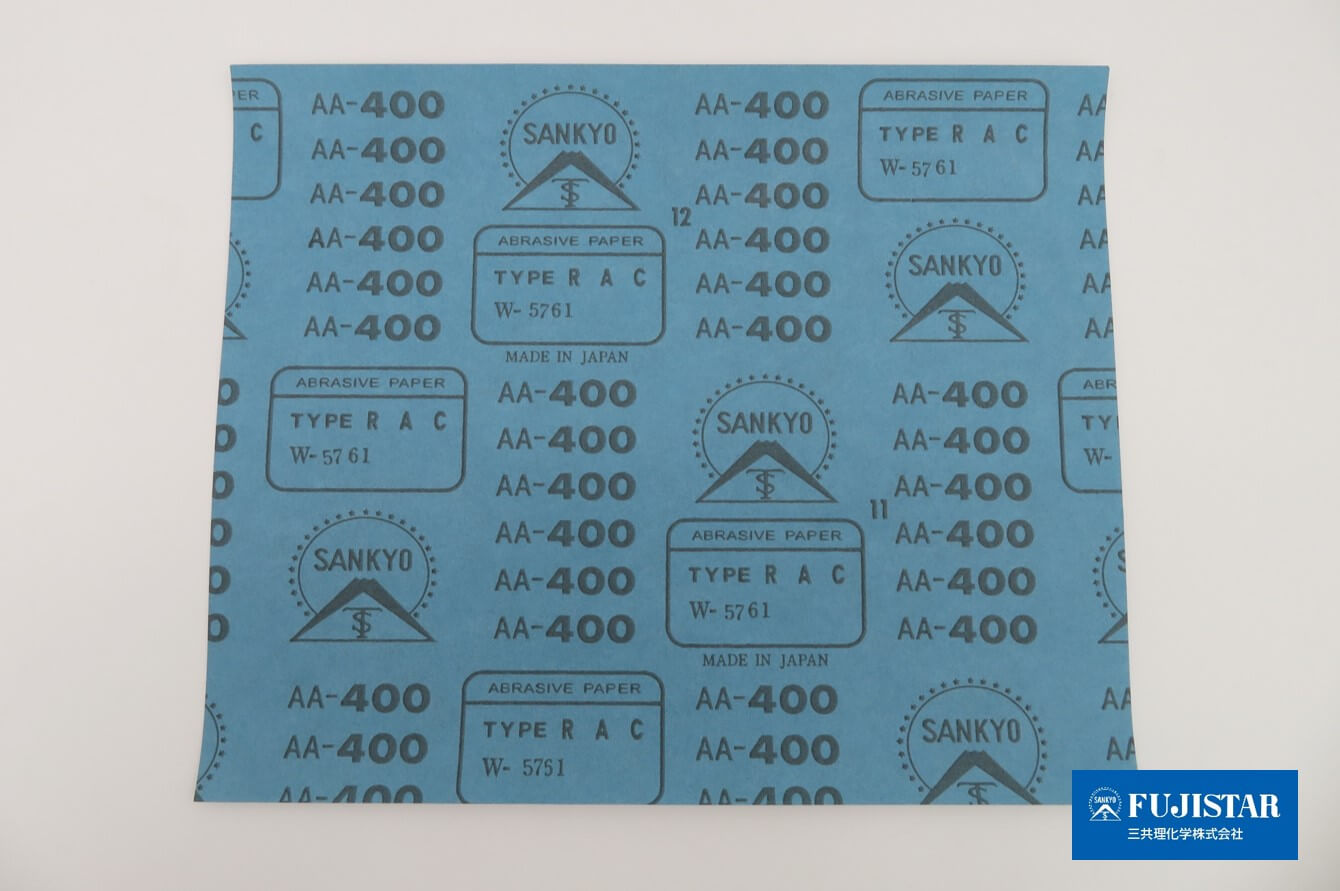
If you look closely at paper or cloth abrasives, you will often find that they are printed on the reverse side.
Do you know what these printings represent?
In fact, by deciphering the information in the print, it is possible to identify the type of abrasive.
At first glance, it may seem difficult because of the many symbols, but there are certain patterns, and once the meaning is known, deciphering is surprisingly easy.
I numbered the important parts of the abrasive print pattern.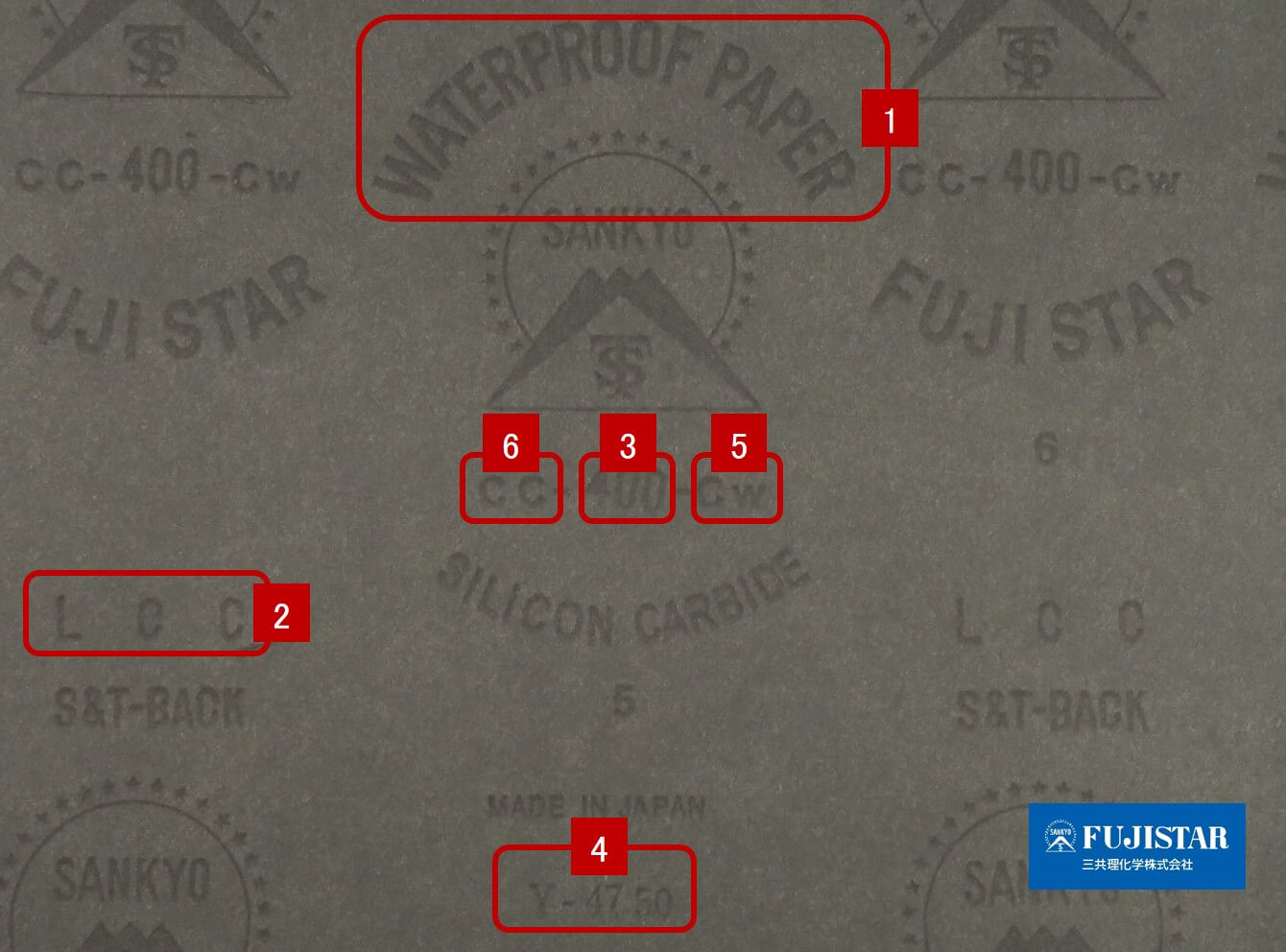
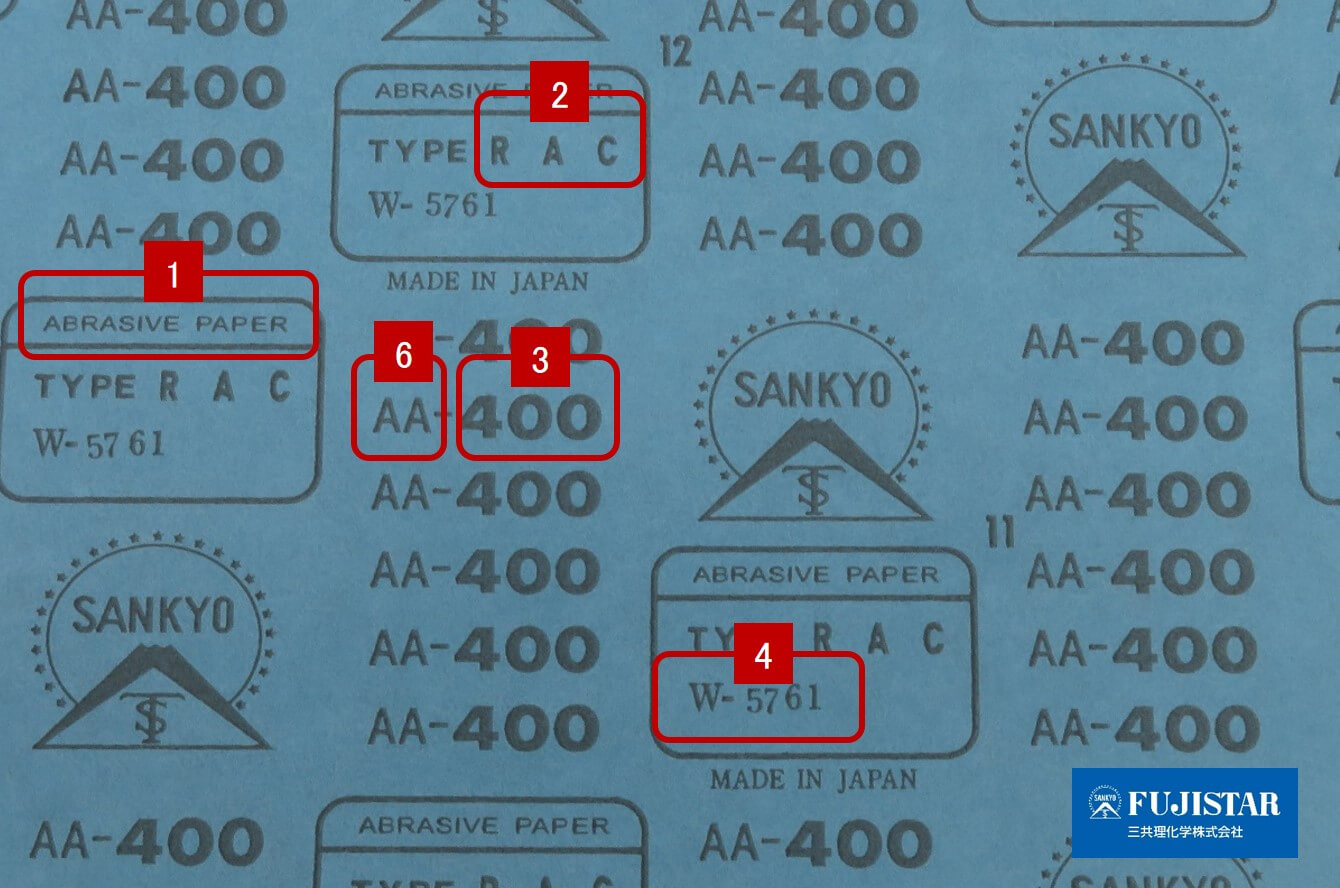
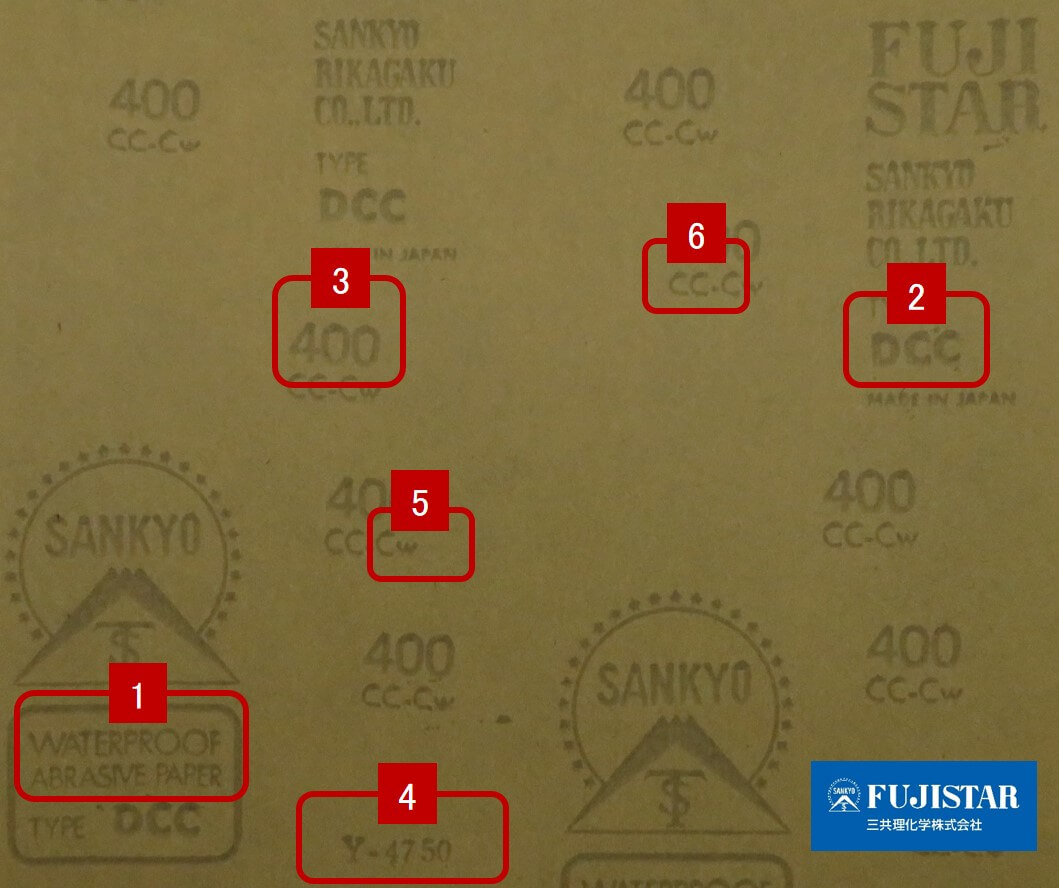
(1)Abrasive Classification
(2)Abrasive Part Number
(3)Abrasive grain size
(4)Production lot
(5)Type of base material used
(6)Type of abrasive grains used
(1)Abrasive classification
Indicates what kind of abrasive is used.
I translated it because it is often written in English.
WATERPROOF PAPER:Water Resistant Abrasive Paper
ABRASIVE PAPER:abrasives
The water-resistant abrasive paper is clearly labeled
(2)Abrasive Material Part Number
This symbol indicates the type of abrasive.
Be sure to check this information as it is necessary to identify abrasive materials.
(e.g.) Most are three letters of the alphabet, such as LCC (RAC, DCC), but there are exceptions.
(3)Abrasive material grain size
This number represents the particle size of the abrasive. The size of the number determines the roughness of the finish, so be sure to check it.
The larger the number, the finer the finish.
(e.g.) #(P) + number, as in #400.
(4) Production lot
This symbol indicates when the abrasive was manufactured. Sankyo Rikagaku Co., Ltd. has developed a system to identify when and under what conditions the product was manufactured in the unlikely event of a problem with the product.
A unique serial number is assigned.
(e.g.) Y-4750, which is a combination of one letter of the alphabet and two to four numbers.
(5) Type of base material used
This symbol indicates what kind of base material (kizai) is used for the abrasives introduced earlier.
(Example 1) If the substrate is paper: (thinner) Aw-Cw-Ew-Fw (thicker)
(Example 2) If the base material is cloth: (thinner) Jw-Xw-Yw (thicker)
(6) Types of abrasive grains used
This symbol indicates what kind of abrasive grains are used in the abrasive materials introduced earlier.
(e.g.) AA (CC/GC), where the type of abrasive grain is described.
AA: brown alumina, CC: black silicon carbide, GC: green silicon carbide
Printing, which at first glance appeared to be a meaningless symbol, somehow feels right once the meaning is understood.
If you want the same abrasive as you have now, you can communicate smoothly by telling us (2), (3), and (4) when you contact us.
3. How to choose abrasives - Which abrasive should I choose? Let's take a look at the various shapes of abrasives!
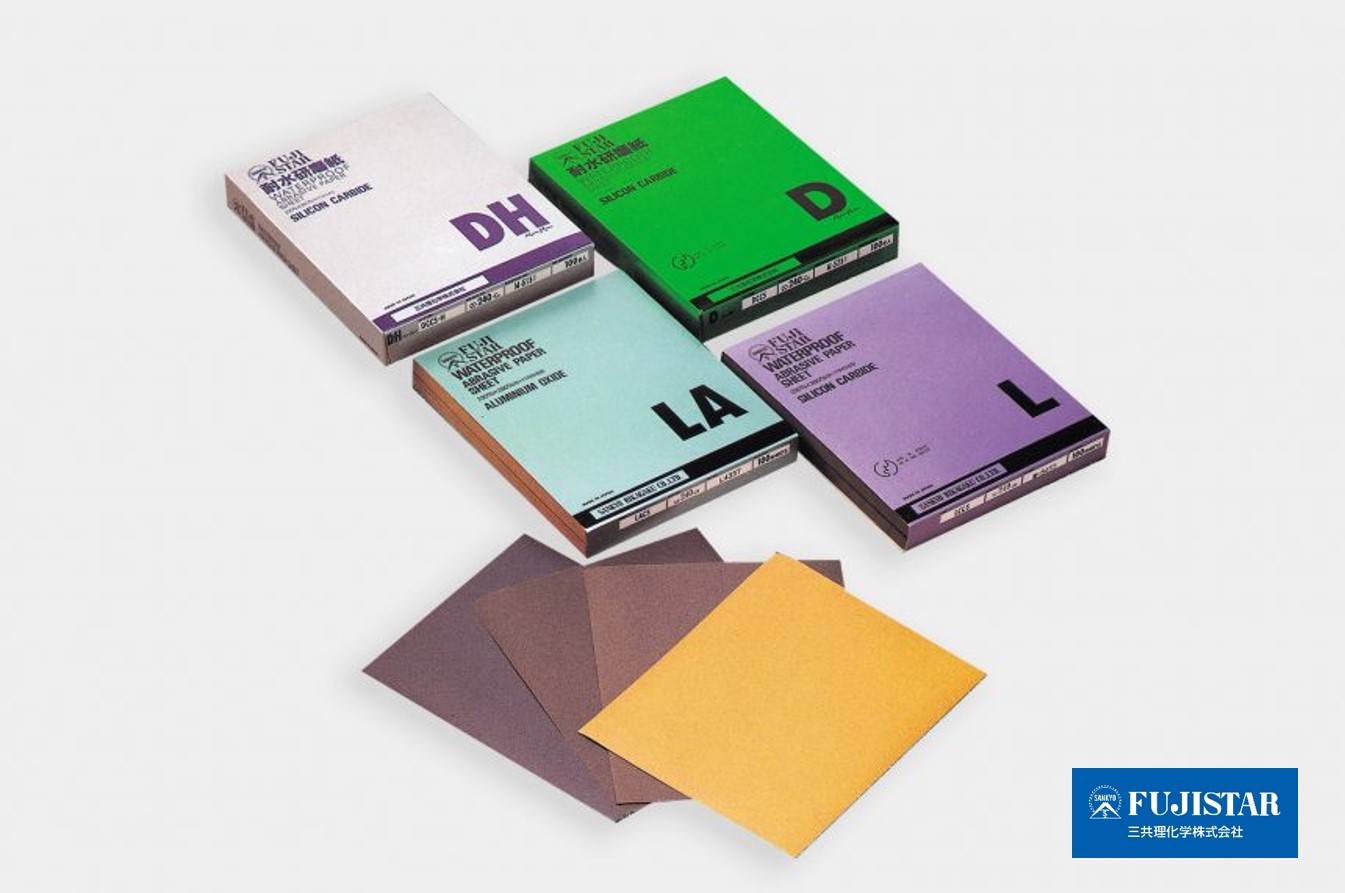
Sheet Products - Sankyo Rikagaku Products (fujistar.com)
The sandpaper that most people think of is probably in this shape.
It is one of the abrasive materials sold at home centers and relatively easy to obtain.
Many of you are probably using it for DIY and plastic model making.
The most important feature is its wide variety, which includes many types, from water-resistant to fabric ones.
It is also good to be able to cut and use only what you use.
Rectangular (230 mm x 280 mm) is the most common size, but recently products in various shapes to suit different applications are also available.
Disk Products - Sankyo Rikagaku Products (fujistar.com)
It will be an abrasive material to be attached to a power tool sander or a file for hand sharpening.
The back side is processed with Velcro tape and glue for easy attachment and removal.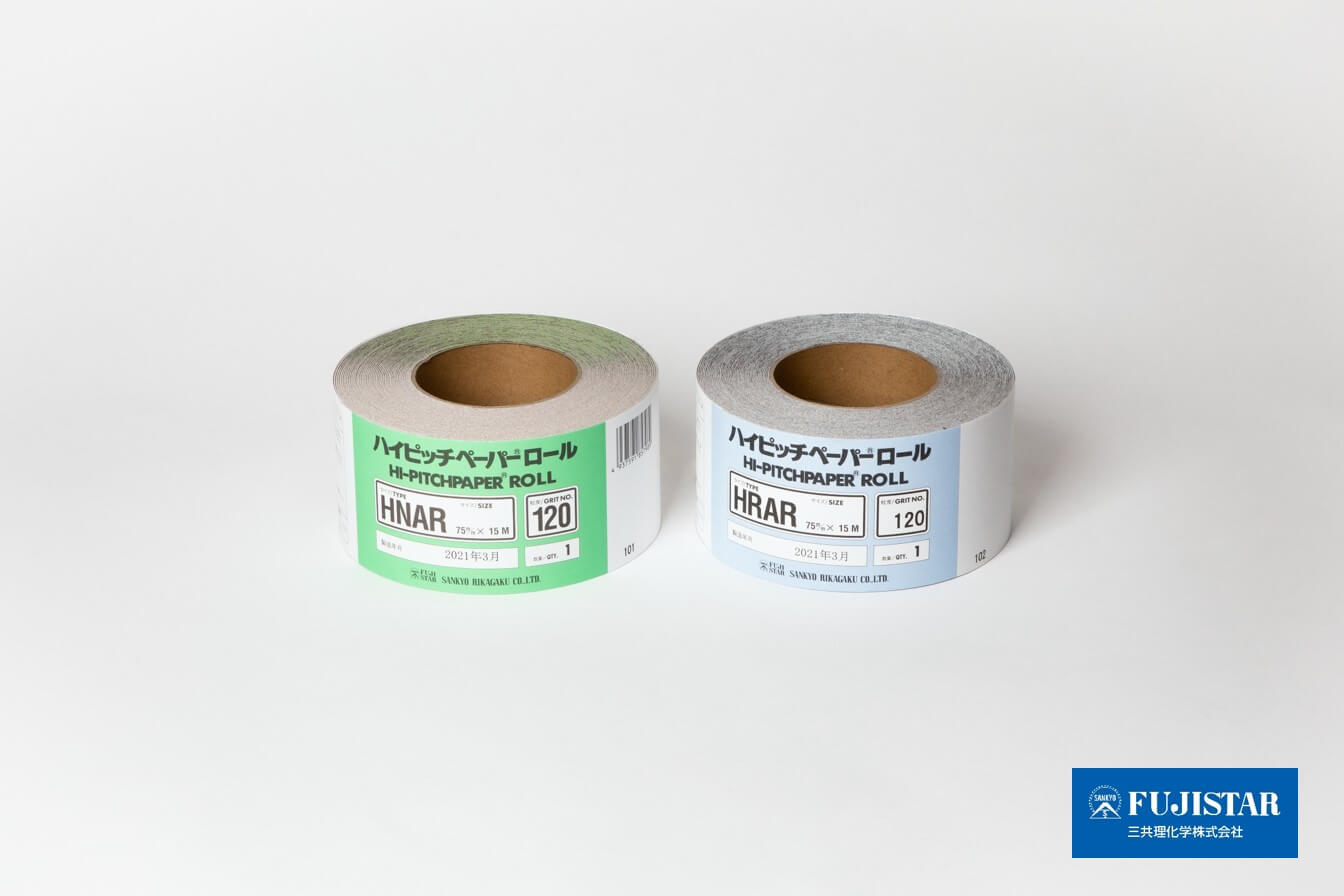
Roll Products - Sankyo Rikagaku Products Introduction (fujistar.com)
This type is attached to a grinder and used while being unloaded by the machine. Can also be cut to fit the tool to be used, and attached to electric tools or files for hand sharpening.
In this case, the backside must have Velcro or glue treatment.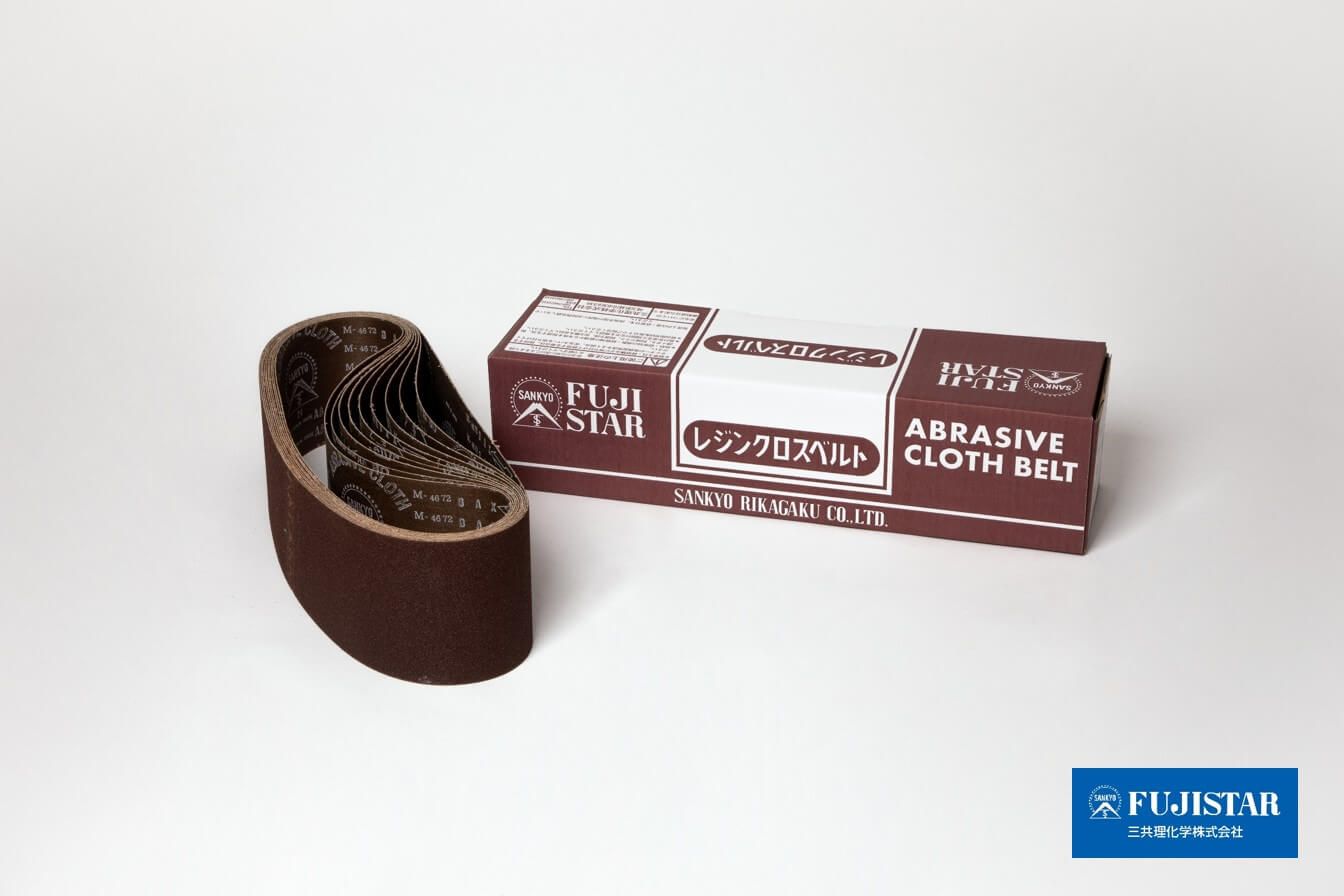
Belt Products - Sankyo Rikagaku Products (fujistar.com)
Abrasive material processed in the shape of a ring and available in various variations in width and circumference.
Polishing can be performed by attaching it to a grinder and applying a rotary motion.
We found that abrasives come in a variety of shapes and sizes.
Some types of abrasives require special tools or polishing machines, and the easiest to use is still sheet-type abrasives with hand sharpening.
Note, however, that hand sharpening may not be suitable for some uses.
4. How to choose abrasives - Which abrasives are best for polishing plastics? Polish efficiently with the right abrasive for the situation!
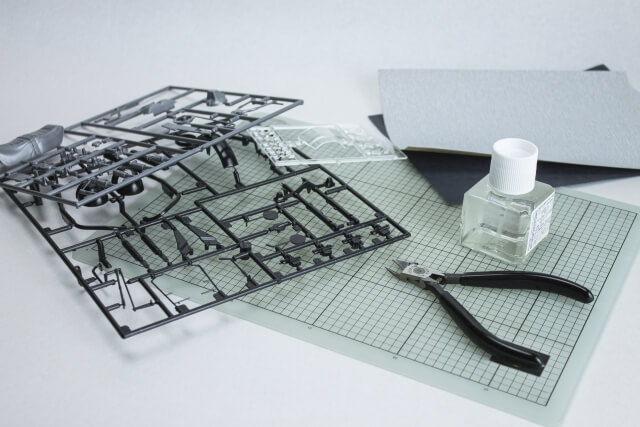
It is important to use different abrasive grit sizes depending on the nature of the work.
In work such as stripping paint and removing rust, the finish will be somewhat rough,
Coarse abrasives (with smaller grit size numbers) may be used for workability.
In contrast, fine abrasives (with larger grit size numbers) should be used for finish polishing.
The basic polishing method is to use a small grain size number for rough polishing, and then gradually change to a larger grain size number for finishing.
・When you want to polish a small area
Cut the abrasive to the appropriate size for the workpiece and polish it by hand, checking the polished surface.
We recommend abrasives in the form of sheets that are easy to cut.
・When you want to polish a large area
Since hand sharpening can be time consuming, consider using a power tool such as a sander or a grinder.
In this case, select an abrasive with a magic or glue finish for smooth installation on the tool.
・When you want to polish metal
Abrasive cloths that are resistant to abrasion and durable are recommended.
Cloth abrasives use strong cotton cloth as the base material, which is tear-resistant and highly durable.
・When you want to polish wood
As abrasives are used, they become clogged (abrasive debris accumulates between the abrasives) and their polishing ability decreases.
If you want to sharpen materials that are prone to clogging, such as wood, use a blank sharpening paper with an anti-clogging finish.
The anti-clogging agent prevents clogging and maintains abrasiveness.
・To polish resin (plastic, etc.)
Water-resistant abrasive paper, dry abrasive paper, and abrasive film are recommended.
Depending on the level of finish you are aiming for, if you are aiming for a finer finish, try using a polishing film with a finer grain size after water-resistant polishing paper.
5. Let's understand abrasives properly to achieve a better finish!
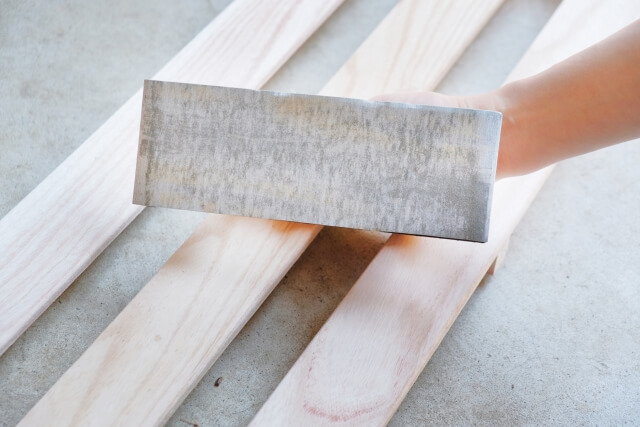
In this issue, we introduced the types of abrasives and how to select them.
It is important to select the right abrasive (type, grit size, and shape) for the material to be polished.
Choosing an incompatible abrasive may result in longer working hours and a reduced finish.
Abrasive materials have their own characteristics and areas of expertise, and understanding them will lead to improved quality and work efficiency.
If you are interested in polishing, please feel free to contact Sankyo Rikagaku.
